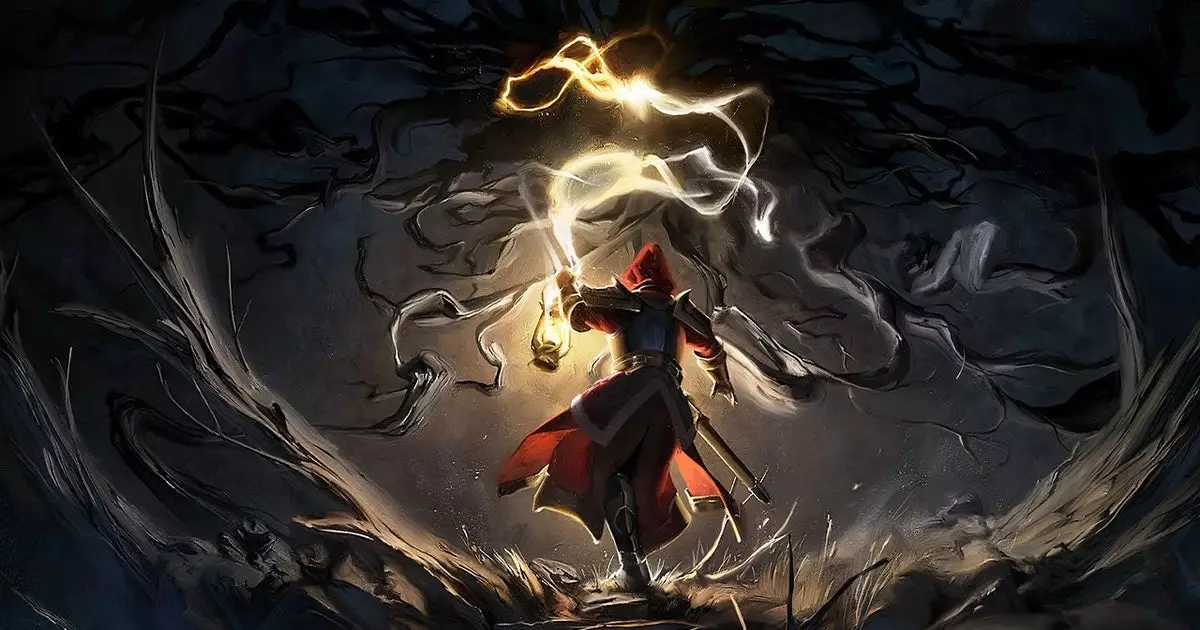When first introducing players to “Mandragora: Whispers Of The Witch Tree,” my initial skepticism revolved around the game’s design and narrative elements. Dark fantasy side-scrollers have been notably prevalent in the gaming community; they often risk blending into a somewhat monotonous backdrop of similar titles. Mandragora, at a superficial glance, seemed to fit this pattern of routine mediocrity. Its aesthetic drew immediate comparisons to beloved classics like Castlevania, yet quite like the potential of a blown-up balloon, there was a nagging fear that it would ultimately deflate upon closer inspection. This initial trepidation prompted a cautious approach to understanding Mandragora’s nuances.
However, in contrast to my apprehension, the vibrant discussions emerging from early adopters of its demo were hard to ignore. Players who sank hours into these previews were ecstatic, hinting at an underlying charm and depth that the trailers didn’t quite convey. The game’s official launch became a compelling reason for me to dive deeper, and I found myself pouring over a complete build to grasp its intricate layers.
A World Rich in Dark Storytelling
What is particularly intriguing about Mandragora is its narrative foundation, which appears to transcend the mere mechanics of a standard action RPG. Set against a post-apocalyptic backdrop, the player enters the Crimson City, a place ruled by a somber monarch—the King Priest. Drawing inspiration from familiar archetypes, the King Priest embodies a dark, casi-religious zeal reminiscent of Judge Claude Frollo from Disney’s adaptation of “The Hunchback Of Notre-Dame,” involved in tormenting those branded as witches.
Playing as an inquisitor in this beleaguered realm, the story unfolds intriguingly as you embrace mysterious powers through morally complex choices. The shadow of the King Priest looms large, creating high stakes around the player’s mission to save other tortured souls. This storytelling essence gives Mandragora a distinctive flavor, enhancing the player experience beyond mere action sequences.
NPC Interactions and Artistic Aesthetics
The world of Mandragora is populated by intricately developed Non-Playable Characters (NPCs) whose dialogue and actions help to augment the game’s atmosphere. Their animated portraits, reminiscent of disturbed oil paintings, may not appeal to every player, but I argue they add a layer of intensity that immerses players deeper into the narrative. This visual direction breathes life into characters, urging players to forge connections amid their tumultuous journeys.
In the opening sequences, players are introduced not only to the mechanics but also to fellow inquisitors through conversations that resemble an artful tapestry. These early interactions establish a rich storytelling framework—a crucial element often overshadowed in action-oriented games. Such attention to detail in NPC characterization greatly enhances immersion and fortifies the player’s emotional investment in the unfolding drama.
Gameplay Mechanics: A Blend of Action and Strategy
As an action RPG, Mandragora exhibits a complex interplay between combat mechanics and strategy. Emphasizing stamina management and evasion, players will find themselves strategically navigating the battlefield with agility. Unlike more straightforward hack-and-slash games, each encounter necessitates critical thinking about approach and resource allocation, offering layers of tactical depth to traditional combat.
Additionally, the game masterfully incorporates an element of exploration reminiscent of titles like Dark Souls, encouraging players to traverse labyrinthine levels filled with hidden alcoves and rewarding secrets. The presence of altars for fast traveling and leveling up further emphasizes the importance of strategic exploration, creating a sense of satisfaction as players unveil the intricacies of the environment.
A Unique Narrative Experience in Gaming
Ultimately, what sets Mandragora apart is its unwavering commitment to storytelling. It manages to entwine heartfelt character arcs with rewarding gameplay mechanics in a way that feels intentional, engaging, and far from mundane. The cross-section of captivating narratives and complex game systems invites players to rethink their preconceptions about side-scrolling adventures in a saturated genre.
While it’s true that gameplay animations may occasionally feel clunky, the artistic vision behind Mandragora warrants appreciation. In a landscape often glossed over by sheer action, this game is unafraid to delve into the murky depths of thematic exploration, inviting players to not just engage, but to reflect, challenge, and immerse themselves entirely within a world laden with shadows, intrigue, and moral complexity.

